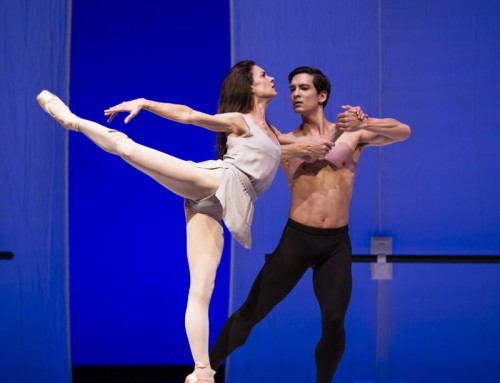Artistic Director’s Notebook: Sendak & Stowell Nutcracker
After being deposed as Prince from New York City Ballet’s Nutcracker, which happens after you reach 5′ tall, I remained part of the production. I became the “bed boy.” The “bed boy” is given a set of knee pads and a few sketchy instructions before he climbs underneath Clara’s bed and maneuvers it around the stage during the snow scene. Though less glamorous than the role of the Prince, it is no less challenging. When performed correctly, no one in the audience suspects human touch, guessing instead that mechanics, or perhaps even magic, are the cause. “Bed boys” aren’t listed in the program for obvious reasons, but they are unsung heroes behind one fleeting moment of illusion.
Nutcracker is ripe with magic, wonder, and illusion, and we in the audience are full of fascination. Knowing the magician’s tricks can end the fascination, and I’m hesitant to give away too many secrets. I do want to talk about some of the unsung heroes that make our production happen. As you watch today’s performance, ask yourself how it is possible to see a scene of large, painted mice on one side of fabric and the Stahlbaum’s parlor on the other. When those mice come to life, how do they see through over-sized mouse heads? How do the wings of the owl flap when the clock strikes during the Christmas Eve celebration? How do the legs of the giant clock swing to life during Clara’s dream? What makes the cannons roar? In Act II, how do the waves move, and how does the scenic landscape behind the boat travel across the backdrop? We do give away one secret in the performance: The Chinese Tiger is one of our male dancers in a very cleverly designed costume.
Truth be told, there are hundreds of people onstage and behind the scenes making all of the wonder happen: “bed boys” and Princes, Claras, and clarinet players. These individuals are consummate professionals who deserve recognition. Let me take a moment to list who’s involved and let you know who they are. Let’s start with our 200 junior performers: three casts in many roles. 65 musicians fill the pit and the hall with Tchaikovky’s music. 40 stage hands pull scenery on and off the stage. 3 stage managers coordinate the whole thing with 13 dressers scramble behind the scenes. 46 Company dancers, 40 advanced students, and a few dozen supernumeraries round out the cast. 3 ballet masters, 3 conductors, 3 physical therapists, 15 wardrobe personnel, 1 parent volunteer coordinator and 75 volunteers, 9 make-up artists, 1 lighting designer, and full time staff at the ballet and box office are also essential. And of course we wouldn’t have a production without choreographer Kent Stowell and set and costume designer Maurice Sendak.
A handful of individuals have been working on this Nutcracker since it was created 27 years ago. One of the reasons they care so much about the production is because at every performance someone in the audience is seeing it for the first time. Often, but not always, it is it is someone quite young and it’s someone who believes in magic. The ballet is pretty close to magic and Nutcracker is the perfect place to start. If you love what you see today, come see us again. Cinderella is right around the corner and many treasures lie ahead in our season.
The magic continues at the ballet.

Peter Boal
Featured photo: PNB dancers in Kent Stowell’s Nutcracker, photo © Angela Sterling.






Thanks for all this information! I also really appreciated the piece done by KUOW’s Marci sillman on the behind-the-scenes magicians and the the Pacific Northwest feature on Doug Fullington. I don’t think many people appreciate the various art and craft specialties that go into making a dance performance.